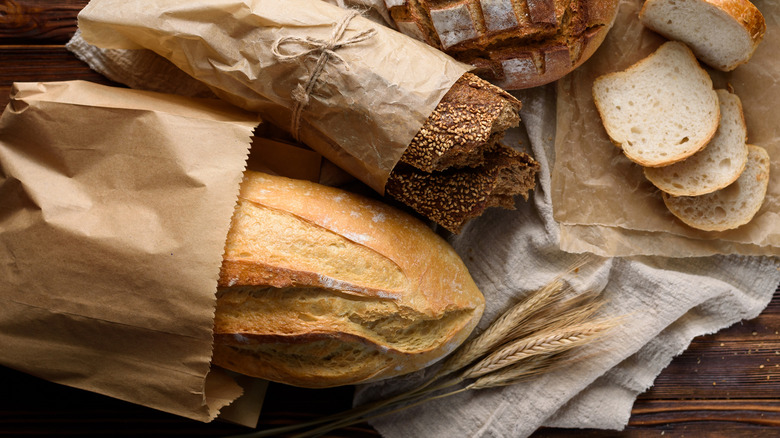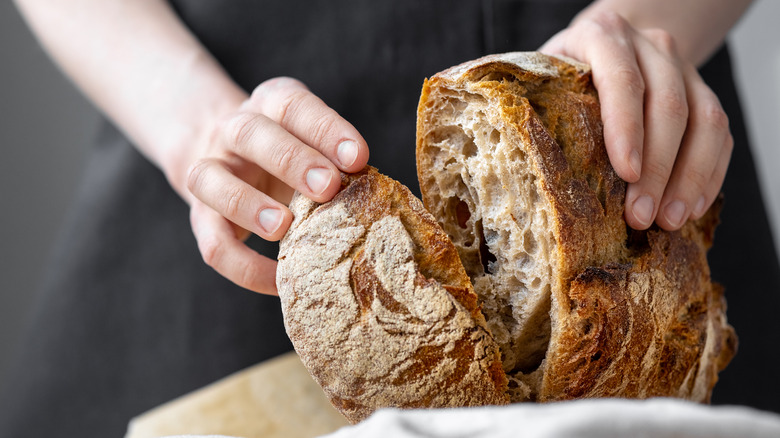Bread Is Sold In Brown Paper Bags For A Reason. Here's Why
Ever notice that fresh baguette, sourdough, or ciabatta loaves always seem to come wrapped in a brown paper bag, with the end of the bread loaves sticking out the top? There's a reason for this, and no, it's not aesthetics, or a fiendish plot by bakeries and supermarkets to make your bread go stale faster so you have to return to buy more.
Rather, according to Reader's Digest, wrapping freshly baked bread loaves in that distinctive brown paper keeps air on the bread, which in turn helps to keep the crust crisp and delicious. As Southern Living notes: "If you store bread in a plastic bag, the moisture from the bread gets trapped in the bag making the crust soft. Storing in plastic will keep the bread fresh longer, but you'll lose the crust."
Pre-sliced sandwich bread is wrapped in plastic so you can keep it in your pantry longer. For fresh bread loaves, meanwhile, which are meant to be eaten within a day or two of purchase, maintaining their taste at its highest level is the primary concern. Hence, the paper bags. Of course, as the Los Angeles Times observes, even when fresh bread does start to go stale it still has uses in dishes like bread pudding.
What makes bread go stale in the first place?
As with most things, there's a science to bread freshness, or the lack thereof. Staling doesn't necessarily happen because bread loses moisture and dries out, but because of the issue of starch retrogradation. In fact, according to the textbook "Starch in Food," starch retrogradation is the "main mechanism for staling of bakery products, increasing firmness of crumb, changing flavor and aroma, and causing loss of crispness." So what is it, and more to the point, is there a way to slow it down to keep bread fresh longer? Per Food Science, starch retrogradation happens when bread comes out of the oven and cools below gelatinization temperature, causing starch chains to realign and reform with a more crystalline structure. Hint: it's not good for freshness.
As the Los Angeles Times reports, a study of Spanish scientists showed bread gets stale fastest at 40 degrees Fahrenheit, which just happens to be the Food and Drug Administration's recommended temperature for refrigerator food safety. So refrigerating bread is not a good option. Freezing, on the other hand, does have freshness benefits if you slice the bread, and put it in a bag first (per Southern Living). Food52 recommends a ceramic bread box for ideal freshness retention. Or you could just move on to making that bread pudding.

